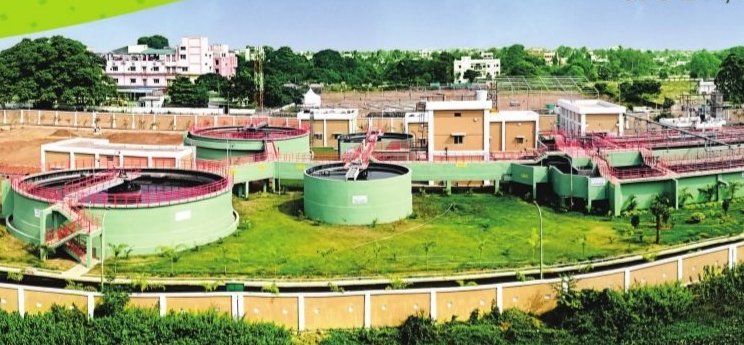Bhubaneswar: Providing sewage treatment facility for 83 per cent of urban households, Odisha has set a national benchmark in sewage treatment measures that prevent water pollution caused by the release of untreated sewage and faecal sludge into rivers.
Housing & Urban Development Principal Secretary G Mathivathanan has informed this during a high-level review meeting held under the chairmanship of Chief Secretary Asit Tripathy here at Lok Seva Bhawan, Thursday.
He said Odisha has been awarded the best state by India Sanitation Coalition and FICCI in Urban Sewage Management for the year 2018. The state has also been awarded by center of Excellence, Mussoorie for good governance in urban liquid waste management for the year 2018.
Reviewing the progress of the sewage treatment in urban areas, Chief Secretary Tripathy directed to expedite completion of 60 sewage treatment plants (STPs) taken up in different urban local bodies (ULBs) of the state.
Tripathy further directed to intensify the awareness and enforcement activities simultaneously in all ULBs.
The Chief Secretary directed to ensure that all urban households should get connected to the sewage system wherever it is available. In the absence of centralized sewage network, they should make use of the cesspool system already available in all ULBs for safe disposal of the sewage.
Director Municipal Administration Sangramjit Nayak said the state has made substantial progress in the matter in the last 4 years. Till 2015, there was only one operational sewage treatment plant in the state for treatment of 2 per cent of the urban faecal sludge.
In 2016, Nayak said, construction of 9 such plants was taken up with annual budgetary allocations. Urban sanitation policy and strategies have been put in place with definite institutional arrangements. By now, seven STPs have been operationalised while 60 more are in different phases of completion.
Chief Secretary Tripathy directed to tag the small ULBs to nearest SeTP for ensuring 100 per cent population coverage. Tripathy further directed to tag the nearby rural areas to different SeTPs in ULBs for extending the benefits to the rural population as well.
Mathivathanan said, since construction and operationalization of the STPs takes time of four to five years and containing water pollution is an urgent requirement, the interim low cost technique of Deep Row Entrenchments (DREs) have been rolled out in different ULBs. It is a tried and tested method for safe disposal of faecal sludge and septage, he said.
This interim measure has been adopted from November 2017. As of now, 84 such DREs have been developed which provide safe sewage disposal service to 83 per cent of the population. With completion of sixty permanent STPs all urban population would be included under that service, the secretary said.
As of now around 200 cesspool emptier vehicles have been procured by the state and those have been given to ULBs for mechanized emptying of septic tanks and pits. The de-sludging rates have been rationalized and brought down to Rs1000 per HH family septic tank/pit. The standard operating procedure for cesspool operations has also been put in place in all ULBs.
